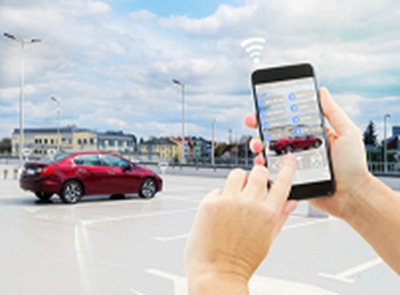Much is being written today about autonomous cars, also referred to as self driving cars. But, what happens when the technology is so advanced that the autonomous cars on our neighborhood roads are safer than cars driven by a human?
Some say that this determination will force mass adoption of the technology. If the autonomous car is safer than a manually driven car, then the autonomous method of transportation will need to be adopted as the universally accepted method of transportation for purpose of protecting human life.
The self driving car technology is advancing with the momentum coming from current car manufactures, such as Toyota, led by their Toyota Research Institute (TRI), and other companies such as Google and Apple.
With these strong companies advancing the technology of autonomous cars, it may not be long that a scenario such as the following may exist.
A person wants to attend a work conference 40 miles from their home. On the way to the conference, the person wants to stop and get a cup of coffee at a cafe near the home. The person uses a smart phone to request the autonomous vehicle to arrive at the home at a specific time for pickup. The person enters the two destinations directly into the smart phone app. After the autonomous car drops off the person at the final destination, the car returns to a main station for recharging or waits to be called by another person.
If the route the autonomous vehicle takes is for only autonomous vehicles, commonly seen safety devices, such as stop lights, may be replaced with trees and bushes, as they will no longer be needed. The vehicles will actually communicate with each other to determine who has the right of way at intersections. Traffic safety will be greatly increased reducing personal injury and property damage resulting from traffic accidents.
Pedestrian traffic will still be an issue. People will be walking and riding their bicycles. The autonomous car will always follow the rules and not have the risk of being distracted, as humans are. Therefore, pedestrians may increase their acceptance of risk by challenging the vehicle. The autonomous car will always slow down and stop for the pedestrian. This may cause bottlenecks in areas that have a high level of pedestrian traffic close to vehicular traffic, such as urban areas.
… autonomous vehicle adoption may be hampered by their strategic disadvantage that slows them down in urban traffic., Millard-Ball states
Great advances in the technology of autonomous cars is bringing this reality closer to us. Even with this advancement, traffic safety will still require attention by businesses, governments and individuals. The ultimate goal is to protect human life, while simultaneously attempting to increase quality of life.

 A person wants to attend a work conference 40 miles from their home. On the way to the conference, the person wants to stop and get a cup of coffee at a cafe near the home. The person uses a smart phone to request the autonomous vehicle to arrive at the home at a specific time for pickup. The person enters the two destinations directly into the smart phone app. After the autonomous car drops off the person at the final destination, the car returns to a main station for recharging or waits to be called by another person.
A person wants to attend a work conference 40 miles from their home. On the way to the conference, the person wants to stop and get a cup of coffee at a cafe near the home. The person uses a smart phone to request the autonomous vehicle to arrive at the home at a specific time for pickup. The person enters the two destinations directly into the smart phone app. After the autonomous car drops off the person at the final destination, the car returns to a main station for recharging or waits to be called by another person.